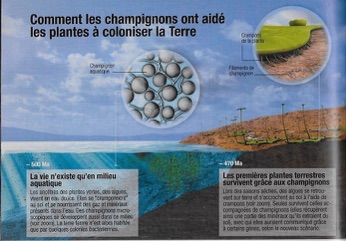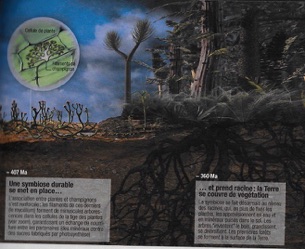
Fungi
Mushrooms are closer to the animal than vegetal world because they can not produce their own food like plants. Non-vascular lower plants, cosmopolitan organisms.
The total number of species of fungi is estimated at 1,500,000, and 120,000 have been described. They have existed for 1 billion years.
90% of the biomass of soil microflora is mycelium (vegetative part of a fungus).
Mushroom spores can be of 2 to 64 different sexes.
Mushrooms recycle mineral salts, promote plant growth, are used for soil remediation.
Fungi create deadwood, as habitat and feeding ground, out of dead trees, in particular pines.
470 million years ago the vegetation migrated from the oceans to the mainland thanks to a mushroom:
Modern agriculture has forgotten this crucial symbiosis. Recreating this link is important for reforestation. It’s time to include fungi in global conservation goals.
Pine plantations changed the soil ecosystem, killing the fungi, necessary for forest restoration, living in symbiotic relation with the trees’ roots, either beneficial or pathogenic. You need to use local fungi for inoculation of tree roots, collected locally.
National environmental law: Fungi are effectively included in Chilean environmental law, in the reform to the Law on General Bases of the Environment, No.19.300.
Fungi foundation: www.ffungi.org
Los hongos se comunican entre sí usando hasta 50 palabras
In the region:
Morels (Morchella)- 3 types, symbiotic with lenga, grow better in burnt forest, moist temperate.



Cyttaria espinosae (digüeñe),
a strict and specific parasite of Nothofagus

